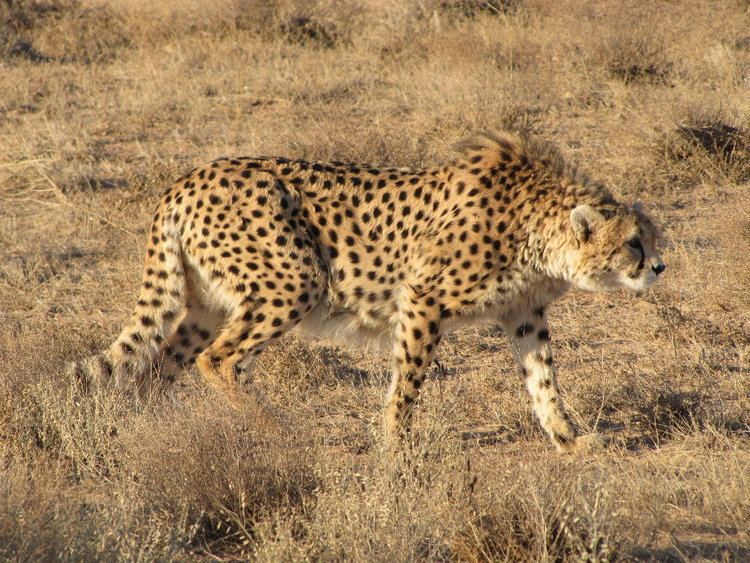 | ||
The wildlife of Iran includes its flora and fauna and their natural habitats. One of the most famous members of wildlife in Iran are the world's last surviving, critically endangered Asiatic cheetah (Acinonyx jubatus venaticus) also known as the Iranian cheetah, which are today found nowhere else but in Iran. Iran had lost all its elephants, lions and tigers by the 21st century.
Contents
Flora
More than one-tenth of the country is forested. The most extensive growths are found on the mountain slopes rising from the Caspian Sea, with stands of oak, ash, elm, cypress, and other valuable trees. On the plateau proper, areas of scrub oak appear on the best-watered mountain slopes, and villagers cultivate orchards and grow the plane tree, poplar, willow, walnut, beech, maple, and mulberry. Wild plants and shrubs spring from the barren land in the spring and afford pasturage, but the summer sun burns them away. According to FAO reports, the major types of forests that exist in Iran and their respective areas are:
- Caspian forests of the northern districts (33,000 km2)
- Limestone mountainous forests in the northeastern districts (Juniperus forests, 13,000 km2)
- Pistachio forests in the eastern, southern and southeastern districts (26,000 km2)
- Oak forests in the central and western districts (100,000 km2)
- Shrubs of the Dasht-e Kavir districts in the central and northeastern part of the country (10,000 km2)
- Sub-tropical forests of the southern coast (5,000 km2) like the Hara forests.
More than 2,000 plant species are grown in Iran. The land covered by Iran's natural flora is four times that of the Europe's.
Fauna
Iran's wildlife is composed of several animal species including bears, gazelles, wild pigs, wolves, jackals, panthers, Eurasian lynx, and foxes. Other domestic animals include, sheep, goats, cattle, horses, water buffalo, donkeys, and camels. The pheasant, partridge, stork, eagles and falcon are also native to Iran.
Endangered
As of 2001, 20 of Iran's mammal species and 14 bird species are endangered. Endangered species in Iran include the Baluchistan bear, Asiatic cheetah, Caspian seal, Persian fallow deer, Siberian white crane, hawksbill turtle, green turtle, Oxus cobra, Latifi's viper, dugong, Persian leopard, Caspian Sea wolf, and dolphins. At least 74 species of Iranian wildlife are on the red list of the International Union for the Conservation of Nature, a sign of serious threats against the country’s biodiversity. Majlis has been showing disregard for wildlife by passing laws and regulations such as the act that lets the Ministry of Industries and Mines (Iran) exploit mines without the involvement of the Department of Environment (Iran), and by approving large national development projects without demanding comprehensive study of their impact on wildlife habitats.
The Persian leopard is said to be the largest of all the subspecies of leopards in the World. The main range of this species in Iran closely overlaps with that of bezoar ibex. Hence, it is found throughout Alborz and Zagros mountain ranges, as well as smaller ranges within the Iranian Plateau. The leopard population is very sparse, due to loss of habitat, loss of natural prey, and population fragmentation. Apart from Bezoar ibex, wild sheep, boar, deer (either Caspian red deer or roe deer), and domestic animals constitute leopards' diet in Iran.
